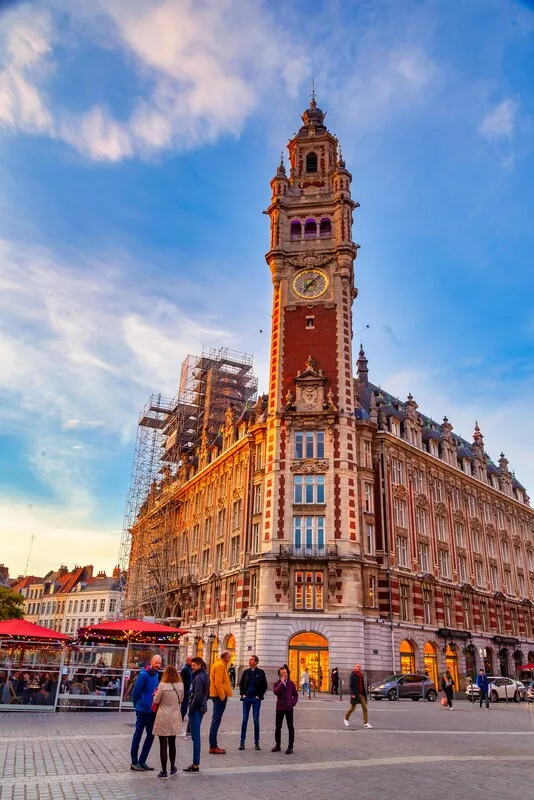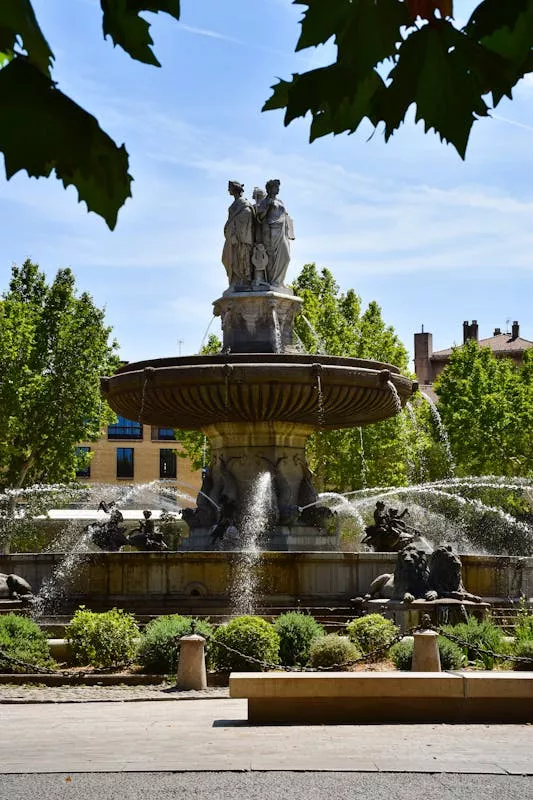Winter isn't here yet, and you would still like to enjoy a holiday in the sun? Do you dream of a heavenly destination and a change of scenery? Why not go to France? Or to the French territories spread around the globe?
Integral parts of France and the French Republic, the French Overseas Possessions are a heritage from the colonial era. These possessions fall into various classifications: French Overseas Departments (Départements d'Outre-Mer or DOM), French Overseas Collectivities (Collectivités Territoriales or COM), and French Special Collectivity. These magnificent regions offer various landscapes: picturesque villages, paradise desert islands, volcanic areas, and dream atolls.
This article presents an overview of these 13 possessions scattered throughout the world and will help you pick your next destination.
Guadeloupe

Guadeloupe is an overseas territorial collectivity of France, consisting of 12 islands in the Lesser Antilles chain within the eastern Caribbean Sea. The region comprises two main islands; Basse-Terre (West) and Grande-Terre (East), which form a butterfly shape. Marie-Galante is the third-largest island, followed by La Désirade and Les Saintes, an archipelago of eight islands. Due to the warm climate, volcanic soils, and heavy rainfall, vegetation is lush, especially on Basse-Terre.
The Guadeloupe islands feature long stretches of beaches open to the public with all-inclusive resorts scattered throughout. Guadeloupe's National Park, found on Basse-Terre, features over 74,100 acres of rainforest. Multiple festivals and celebrations occur throughout the year, most notably Carnival. Carnival is a major cultural event celebrated from January to March and features parade floats, contests, and dance marathons.
Martinique

Martinique is an overseas territorial collectivity of France, located in the eastern Caribbean Sea. The climate is relatively stable, with an average temperature of 79 °F. The island has two distinct seasons, a relatively dry season, from December to June, and a rainy winter season from July to December. Martinique is one of the most popular tourist areas in the Caribbean due to the large number of cruise ships it attracts from; France, Canada, and the USA. One of the most popular attractions is the Balata Botanical Garden, which features more than 3,000 species of tropical plants and raised wooden bridges to give an aerial view over gardens.
French Guiana

French Guiana is an overseas territorial collectivity of France, located along the northeastern coast of South America. The area is subject to heavy rainfall between December and July. High temperatures dominate, with monthly average temperatures varying between 77 and 80 °F. The island is most known for Plage Les Hattes, a beach which is the most important nesting site in the world for giant leatherback turtles. During the peak season from April to July, more than 80 leatherbacks are often seen on the beach in a single night. Another highlight is the Guiana Space Centre, where visitors may have the chance to see a rocket launch.
Réunion

Réunion is an overseas region of the French Republic located in the Indian Ocean, east of Madagascar. Réunion has a tropical climate with cool and dry weather from May to November, then hot and rainy from November to April. Réunion has many tropical and unique beaches that are equipped with barbecues, amenities, and parking spaces. Hermitage Beach is one of the most popular and features a popular snorkelling location.
The island is most famous for Piton de la Fournaise (Peak of the Furnace), one of the most active volcanoes in the entire world. It features hikes to the top of the mountain and allows campers to spend the night near the rim.
Mayotte

Mayotte is an overseas region of France located in the Indian Ocean, between the coast of Southeast Africa and Madagascar. The region consists of a Grande-Terre (main island), Petite-Terre (smaller island), and several islets. Mayotte's tropical climate has an average temperature of 78.5 °F, with a warm, rainy season, from November to April and a dry season, from May to October. A highlight of Mayotte is humpback whale watching, which usually occurs from August -September. Sailing and snorkelling are other popular activities to engage in since Mayotte has one of the world's largest lagoons formed by the local coral reef surrounding it.
Saint Martin

Saint Martin is an overseas island collectivity of France in the West Indies in the Caribbean. Like the other Caribbean island, it has a tropical climate with an average annual temperature of 80.6°F. The island features two main seasons; a dry season from December to April and a winter season from May to November. The island’s coastline offers white sand beaches and coral reefs. Other popular activities include; hiking, horseback riding, and bicycle tours. St. Martin also has a vibrant nightlife featuring casinos, clubs, and concerts, making the island a nightlife hotspot.
Saint Barthélemy

Saint Barthélemy is an overseas collectivity of France located in the Lesser Antilles of the eastern Caribbean Sea. The average temperature on the island is around 80° F, and like most islands, the year is divided into two seasons: a dry one in the summer, a more humid one in winter. Even though Saint Barthélemy is the smallest island of the French West Indies, it offers a wide variety of sights and activities. Gustavia is the capital of Saint Barthelémy and features boutiques, fine dining, and night-clubs. Colombier, Saint-Jean, and Gouverneur are the most popular beaches on the island and offer turquoise waters and white sand to enjoy. In particular, Governor's Beach offers activities where guests are encouraged to try and dig for buried treasure.
Saint-Pierre and Miquelon

Saint-Pierre and Miquelon is an overseas island collectivity of France, found in the northwestern Atlantic Ocean 13 miles from the Canadian province of Newfoundland and Labrador. Saint-Pierre and Miquelon are the last pieces of French territory in North America. Due to their long and dark winters, the best time to visit is July through August.
Saint-Pierre offers various museums, the most popular being the Arche Museum and the Heritage Museum, which provides an architectural walking tour of the island. Meanwhile, Miquelon is more focused on outdoor activities, including; biking, hiking, and horse riding. The island also offers scuba diving, where divers can explore hundreds of shipwrecks along the shores.
New Caledonia

New Caledonia is an overseas collectivity of France, located in the southwest Pacific Ocean, just east off Australia's coast. The climate is subtropical with year-round precipitation, with the period from December to March and July to August is particularly rainy. Meanwhile, the driest months are September through November. The mean annual temperature at sea level ranges 71–75 °F (22–24 °C).
Madeleine Falls is part of a botanical reserve and pride of Caledonians. The Piscine Naturelle offers clear water to swim alongside local fishes. It is a shallow enclosed lagoon on the northeast coast of the Isle of Pines. Le Marché Port-Moselle is a market where fresh fruit, vegetables, and bread are delivered daily. During weekends live music keeps shoppers entertained.
Wallis and Futuna

Wallis and Futuna is an overseas collectivity in the South Pacific. The island is located between Hawaii to New Zealand. The collectivity comprises three volcanic islands (Wallis, Futuna, Alofi) and several tiny islets. The territory has a tropical climate with high humidity and two distinct seasons. A hot, rainy period, from November to March, during which tropical storms may occur. During this season, the average temperatures are in the high 80s °F (about 31 °C). Then a dry, cooler season from April to October, with average temperatures in the low 80s F (about 27 °C).
Wallis and Futuna feature a large variety of beaches that allow for lower crowds and more privacy. Located on Wallis is Talimetumu (Kolo Noi), ancient ruins believed to have been built around 1450. Today, you can visit several well-preserved structures. Locals are very welcoming to visitors and hold various festivals celebrated throughout the year, including music, canoe races, dance performances, sword dancing, and a community feast.
French Polynesia

French Polynesia is an overseas collectivity of France; it consists of five archipelagoes in the south-central Pacific Ocean. The collectivity includes around 130 islands spread across a swath of ocean five times as large as France. The climate is tropical, with a warm rainy season that lasts from November to April and a cool, dry season from May to October.
Tahiti is the largest and most famous island in French Polynesia. It's a popular vacation destination with black-sand beaches, lagoons, waterfalls, and two extinct volcanoes. Matira Beach (Bora Bora) is the most popular tourist attraction of the islands and offers scenic hiking trails, boutique shops, and restaurants. Diving is the most popular activity within French Polynesia and features a wide variety of sea beds, lagoons, and coral reefs. Many clubs have been created in almost all the main islands, resulting in a famous nightlife scene.
Clipperton Island
Clipperton Island is an uninhabited, overseas state private property of France in the eastern Pacific Ocean off the coast of Central America. The isolated island was named after John Clipperton, a British pirate who made the island his hideout early in the 18th century to attack passing ships. There is no airstrip on Clipperton Island, making air travel to the island impossible. If an individual wants to visit, non-french citizens need a permit and will have to travel by their boat or join an expedition.
Fishing and snorting in the waters outside Clipperton Island usually attract more tourists than the island itself. Wildlife-watching is another popular activity, namely the bright orange crabs, some species of birds and rats brought to the island by wrecked ships.
The French Southern and Antarctic Lands
The French Southern and Antarctic Lands is an overseas territory of France that consists of islands within the Southern Ocean, about equidistant between Africa, Antarctica, and Australia. The territory also includes a small strip of Antarctica itself. Because the islands and territories are located in different regions, the climate can significantly vary. The islands near Madagascar and Mauritius have a tropical climate with hot and humid seasons, then a wet season. The southern Indian Ocean Islands are much colder, with temperatures rarely reaching above 18 °C. The Adelie Land on Antarctica has a more hostile climate, with temperatures below -40 °C or more and sometimes very windy conditions.
The region is not known for as a tourist destination. Roughly a population of 150 (in the winter) and 310 (in the summer) persons live in the French Southern and Antarctic Lands, usually any military personnel, officials, and scientific researchers.
COVID-19 and Travel
Due to the current COVID-19 pandemic, the CDC recommends that travellers avoid all non-essential international travel to the previously mentioned regions. An essential trip includes travelling for humanitarian work, medical reasons, or family emergencies.
No matter the reason for travel, older adults and individuals with underlying medical conditions should consider postponing all travel. If an individual gets sick while travelling to any of the previously mentioned territories, medical resources may be limited. Also, if a person gets ill or tests positive for COVID-19 while travelling, they may not be permitted to return to their home country until they have fully recovered. Even an exposure can result in a person requiring quarantine or will not be allowed to return to the United States until 14 days after your last exposure.







